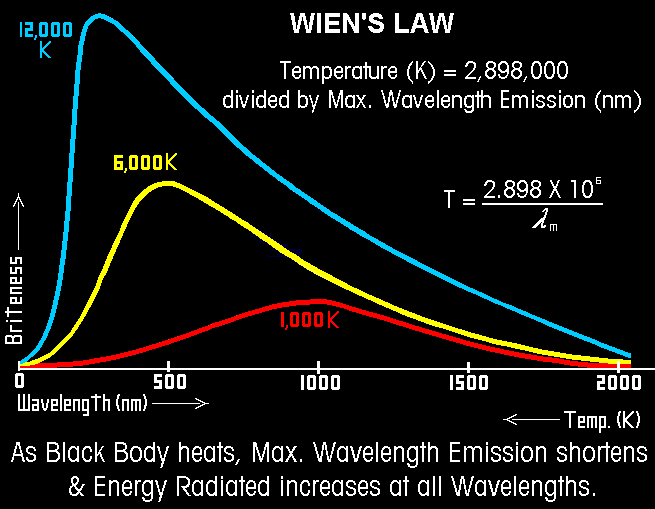Black Body Radiation Experiment Pdf

– From 2005 to 2015 the number of infants diagnosed with neonatal abstinence syndrome (NAS) in the Granite State increased fivefold, from 52 to 269, according to new research by the Carsey School of Public Policy at the University of New Hampshire. In 2015, newborns diagnosed with NAS remained in the hospital 12 days on average, compared to three days for newborns not born exposed. “In 2015, 2.4 percent of New Hampshire births were diagnosed with NAS and that number is projected to.
Beichner: Physics for Scientists and Engineers with Modern Physics. 5th Edition, Vol. 2, Ch.40, Saunders College Publishing (A Division of Harcourt College. Argus Developer Keygen Software. Publishers), 2000. 2) PASCO Instruction Manual and Experiment Guide for the Blackbody Radiation. Experiment, PASCO Scientific.
As the temperature of a black body decreases, its intensity also decreases and its peak moves to longer wavelengths. Shown for comparison is the classical and its. A black body is an idealized that absorbs all incident, regardless of frequency or angle of incidence. A white body is one with a 'rough surface [that] reflects all incident rays completely and uniformly in all directions.' A black body in (that is, at a constant temperature) emits electromagnetic radiation called. The radiation is emitted according to, meaning that it has a that is determined by the alone (see figure at right), not by the body's shape or composition.
An ideal black body in thermal equilibrium has two notable properties: • It is an ideal emitter: at every frequency, it emits as much or more thermal radiative energy as any other body at the same temperature. • It is a diffuse emitter: the energy is radiated, independent of direction. An approximate realization of a black surface is a hole in the wall of a large enclosure.
Any light entering the hole is reflected indefinitely or absorbed inside and is unlikely to re-emerge, making the hole a nearly perfect absorber. The radiation confined in such an enclosure may or may not be in thermal equilibrium, depending upon the nature of the walls and the other contents of the enclosure. Real materials emit energy at a fraction—called the —of black-body energy levels. By definition, a black body in thermal equilibrium has an emissivity of ε = 1.0.
A source with lower emissivity independent of frequency often is referred to as a gray body. Construction of black bodies with emissivity as close to one as possible remains a topic of current interest. Besanko 2nd Edition Microeconomics Examples. In, the radiation from and is sometimes characterized in terms of an, the temperature of a black body that would emit the same total flux of electromagnetic energy.
Contents • • • • • • • • • • • • • • • • • Definition [ ] The idea of a black body originally was introduced by in 1860 as follows.the supposition that bodies can be imagined which, for infinitely small thicknesses, completely absorb all incident rays, and neither reflect nor transmit any. I shall call such bodies perfectly black, or, more briefly, black bodies. A more modern definition drops the reference to 'infinitely small thicknesses': An ideal body is now defined, called a blackbody. A blackbody allows all incident radiation to pass into it (no reflected energy) and internally absorbs all the incident radiation (no energy transmitted through the body). This is true for radiation of all wavelengths and for all angles of incidence. Hence the blackbody is a perfect absorber for all incident radiation. Idealizations [ ] This section describes some concepts developed in connection with black bodies.
An approximate realization of a black body as a tiny hole in an insulated enclosure Cavity with a hole [ ] A widely used model of a black surface is a small hole in a cavity with walls that are opaque to radiation. Radiation incident on the hole will pass into the cavity, and is very unlikely to be re-emitted if the cavity is large. The hole is not quite a perfect black surface — in particular, if the wavelength of the incident radiation is longer than the diameter of the hole, part will be reflected. Similarly, even in perfect thermal equilibrium, the radiation inside a finite-sized cavity will not have an ideal Planck spectrum for wavelengths comparable to or larger than the size of the cavity. Suppose the cavity is held at a fixed temperature T and the radiation trapped inside the enclosure is at with the enclosure. The hole in the enclosure will allow some radiation to escape.